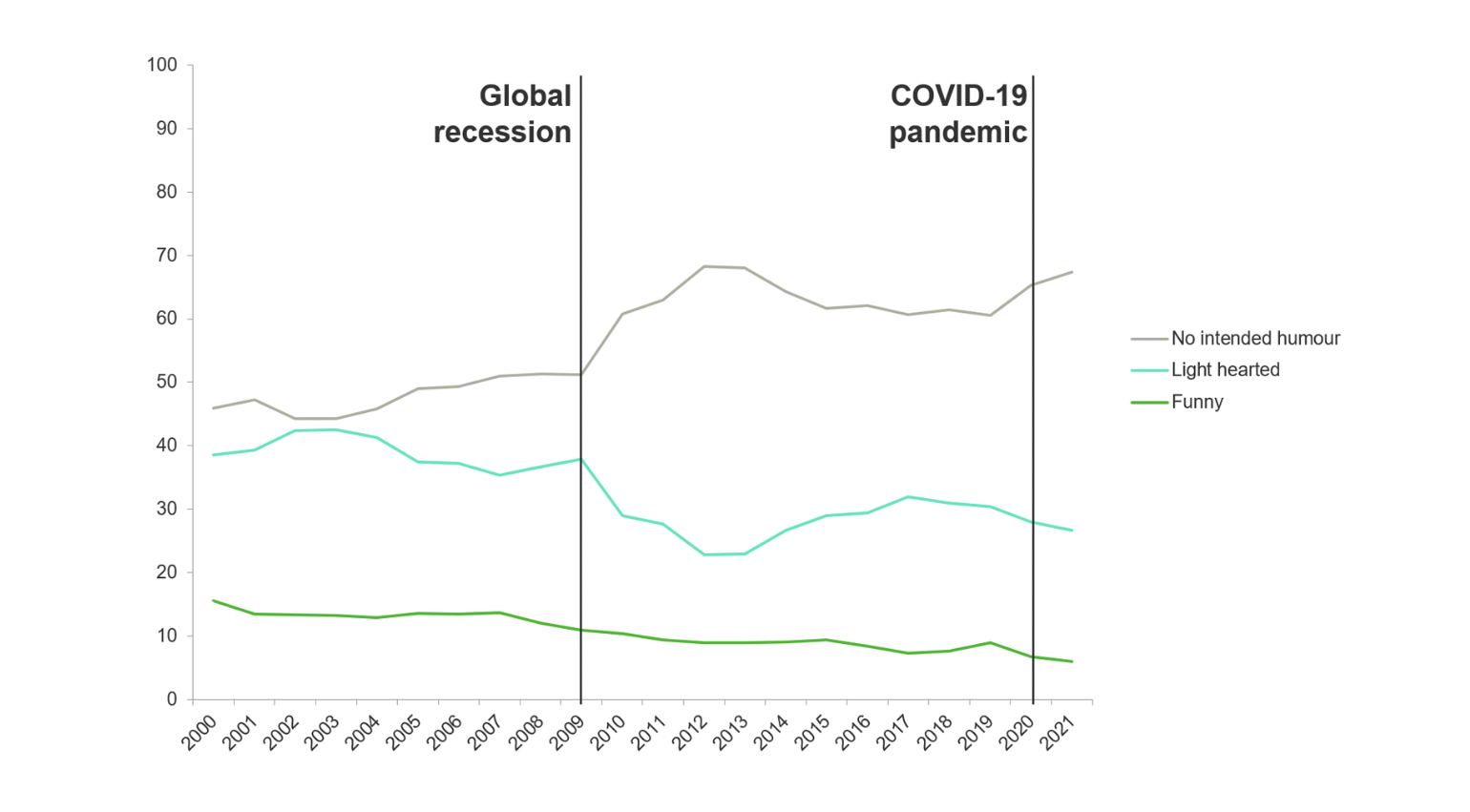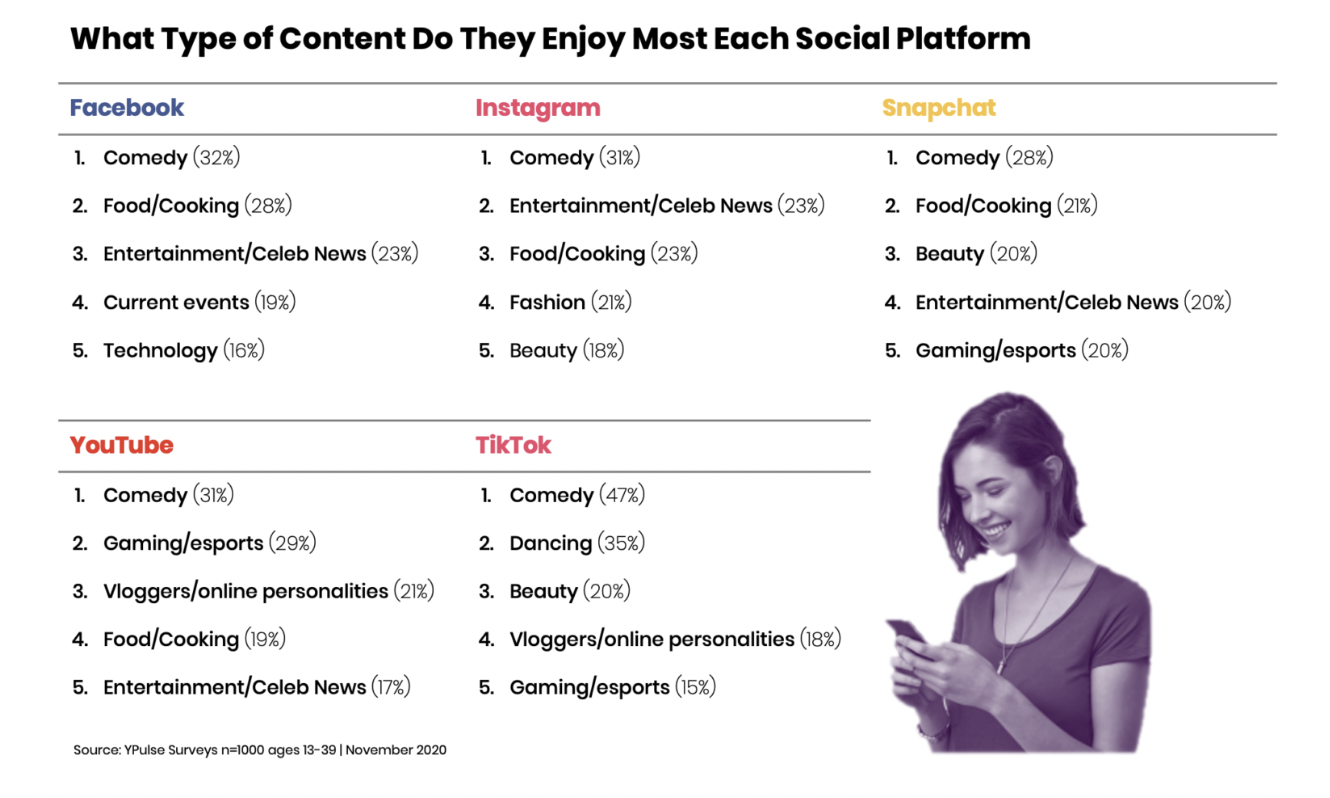Brands & Humour: getting it right
We caught up with Anna O’Riordan, Brand & Marketing Consultant, to explore how and when brands can best use humour in their campaigns.
“Laughter is the shortest distance between two people” – Victor Borge
Humour offers a great way to ‘humanise’ your brand and connect with an audience. We can all remember a clever line we’ve spotted on a billboard. Or a TV ad that’s provoked more laughs than the programme we were watching before the ad-break. Comedy’s ability to help brand cut-through is strong. Even more so as we face a seemingly endless stream of bad (and even horrendous) news in recent months and years.
Yet it can be hard for brands to get humour right. A bad joke can set social media buzzing for all the wrong reasons, and even get a brand ‘cancelled’. Some brands are thus hesitant to use humour. In fact, a recent Kantar report found a significant decline in the use of humour in ads. In 2004 more than half (53%) of ads were funny or light-hearted in tone; by 2020 only 34% made any attempt at humour.

So, how can brands be confident when using comedy and humour? Reflect on the following:
1. Do I really need humour to get my message across?
Think about what you’re trying to achieve through your communication. How might humour help? Or is there a better way? Humour is brilliant at getting people to engage with a brand that they previously felt wasn’t for them.
It can also be helpful when trying to get people to consider more challenging topics. This can backfire when those challenges directly impact the audience – for example, humour has no place in a price increase communication!
Timing is also everything. Brands need to tread carefully in the depths of a crisis or when facing a PR issue. Comedy may still have a role to play but a more self-deprecating approach which shows self-awareness is needed here.
2. What type of humour is right for my brand?
Just as brands have differing personalities, so too their approach to humour will differ (and hopefully match!). You don’t want your brand tone of voice to clash – or flip-flop between styles and create inconsistency. Think about the current appeal and personality of your brand before you go too far in your campaign:
- Humour may not be the right approach if your brand takes itself seriously.
- Brands with a spontaneous, fun-loving personality find it much easier to use humour. They often take a more ‘prankish’ approach, which can veer to being too ‘childish’ for some audiences. Be careful that you aren’t using a joke just for another opportunity to talk about yourself: this can get tired very fast.
- Humble, authentic brands might use self-deprecating humour to endear themselves to an audience. Making light of how they are perceived is key here, for example poking fun at being ‘less frills’ than their competitors.
- Bold, dynamic and independent brands might err more towards edgy, shock-value comedy. This route may work for a specific audience but risks alienating others who find the ‘joke’ uncomfortable (or inappropriate). Be careful not to cross a line by making a joke about a specific group of people or delving into a sensitive subject. Directing the joke towards the establishment in or broader national traits can be less high risk, however brands taking this approach risk derision and defection if the ‘stance’ clashes with the way they themselves operate.
- Brands that occupy a more niche sector may be able to leverage the ‘in joke’ of the moment. Just be sure to fully understand the joke first. Or risk facing backlash as people cringe at your brand’s misunderstanding of a meme or running joke!
3. Do I really understand my audience and their culture?
Our sense of humour is deeply rooted in our nationality, our shared view of the world, and the societal norms that are so familiar to us.
We Brits love to laugh at ourselves. Much of our humour is delivered at the expense of the teller. We also tend towards deep irony and like to push the boundaries of what is socially acceptable. This does not translate across every audience in the UK – and more importantly it does not translate across every culture.
Before embarking on creative – especially for a prominent campaign –, it’s worth taking time to research your audience, teasing out their likes, dislikes and the ‘ways in’ to a comedy brief.
“People want to laugh”
We often make the mistake of thinking we need to think of something clever, outrageous, or provocative to make someone laugh. The reality is that people want to laugh.
A recent YPulse survey exploring content preferences amongst young audiences on social media showed just how desirable Comedy is:

The audience is there and wants to share your sense of humour. You simply need to understand what message you need to convey, why something might be funny to your audience, and let the humour shine through.
The Comedy Crowd are here to help. They crowdsource ideas from a global community of diverse, talented comedy writers and performers, applying their expert knowledge to find the right fit for your brand and audience. Find out more here
And you can read more about how brands can apply humour in marketing with some great examples here






